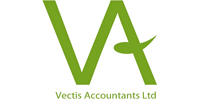If you have paid too much tax, you'll want to claim a refund as soon as possible. There are different ways to do this, depending on how you are taxed and which year you want a tax refund for.
Refunds for the current tax year
If you are an employee taxed using PAYE, paying too much tax generally means that your tax code needs changing.
You should check your personal tax account to see what your code is. You can also use this to tell HMRC about any changes that affect it. Once your tax code has been adjusted, any overpaid tax is refunded in the pay you get from your employer.
Overpaying can happen, for example, when you have a new job and get put on an emergency code. Once you've given your employer the information they need about your previous income, your tax code is updated.
There's a different system if you are self-employed and pay tax through self assessment. The tax payments you make include two payments on account, based on your tax bill for the previous year. If your income falls – for example, because your business becomes less profitable – these payments on account might be too high.
You can ask HMRC to reduce your payments on account if you know your tax bill is going to be lower. But if that means you end up paying less than you need to, you will be charged interest on the underpayment.
Tax refunds for the previous year
If you are only paid through PAYE, HMRC should tell you if they think you have paid too much tax. They do this by sending you a P800. This gives details of your income, the tax you should have paid, and any overpayment or underpayment.
If you haven't received a P800, you can check your personal tax account online to get the information you need.
Check whether the information in HMRC's tax calculation matches your own records. If it's wrong, contact HMRC (0300 200 3300). If they agree with you, they will update their records and send you a P800.
If you've paid too much tax, the P800 tells you how to get your tax refund. You will either get a cheque automatically or need to make a claim online.
If you use self assessment, HMRC does not send out a P800. Instead, HMRC should refund you automatically. If not, either request a repayment through your online tax account or contact HMRC.
Making Tax Digital
The government is gradually introducing Making Tax Digital, a new system for keeping digital records and sending information to HMRC using software.
With Making Tax Digital, you should be less likely to make errors. Information can be automatically sent to HMRC rather than needing to complete a self assessment tax return.
You send HMRC information more often – at least every three months, or more often if you want. This helps HMRC to have an up-to-date picture of your income and what tax you should be paying.
This may also help you avoid the year-end rush to get your records up to date and complete your self assessment return. But it may also mean extra work during the year, particularly when you are getting used to the new system.
You don't have to use Making Tax Digital for income tax yet – the Government has postponed the date it will become compulsory for the time being. But you can join the Making Tax Digital pilot for income tax if you want to.
You can find out more with HMRC's help and support for Making Tax Digital.
Claims for earlier tax years
If you think you may have overpaid in an earlier year, your first step is to check what you paid and how much you think your tax bill should have been.
If you use tax return software, this should have details of all your income and a calculation of how much tax is due.
You can also ask a tax expert, such as an accountant, to review your financial records and assess what your tax bill should be. An expert can give you face-to-face advice and check whether you are missing any opportunities to reduce the tax you pay. The cost is typically £250 upwards, depending on how complicated your tax affairs are.
If you think you are due a refund, contact HMRC either through your online account or by phone. You must make your claim within four years from the end of the tax year that you want a refund for.
If you think you might be entitled to a tax refund for other kinds of income (for example, pension or redundancy payments), use HMRC's claim a tax refund service to find out how.
Content reviewed by Mike Parkes, technical director, GoSimple Software
